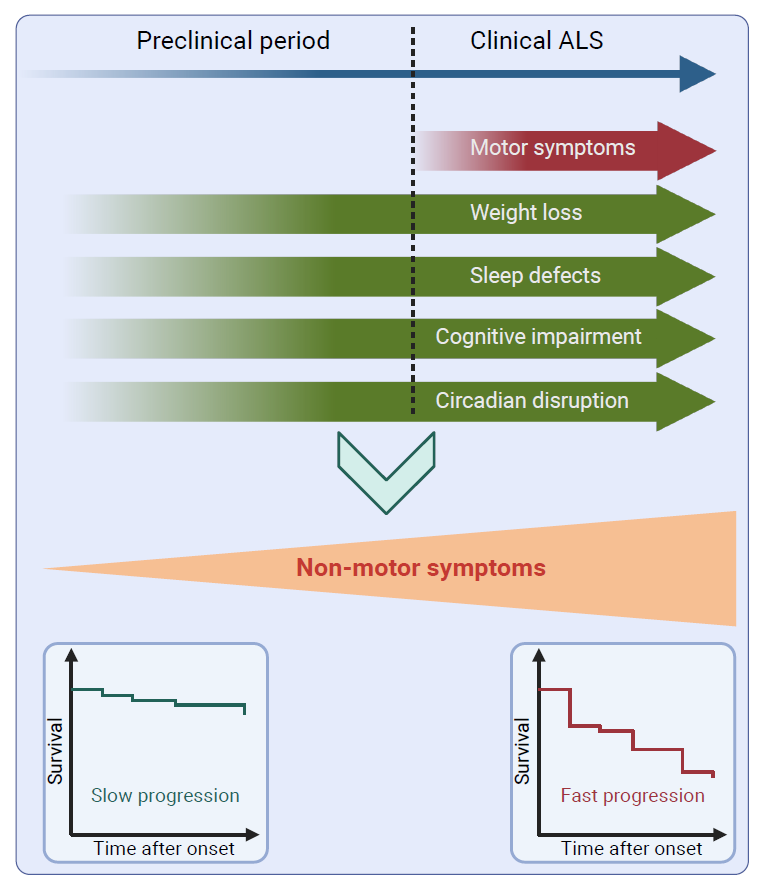Presentation

Cohort and epidemiological studies have shown that the clinical phase of ALS and FTD is preceded of several years by preclinical signs, which do not correspond to the core symptoms of the future disease. Our research focuses on the long prodromal periods that precede the onset of the classical clinical symptoms defining these diseases. We have specifically shown the importance of weight loss and sleep defects in the signs and symptoms of ALS. The mechanisms underlying these early signs, their connection to the subsequent disease, and their potential as therapeutic targets remain poorly understood. Addressing this knowledge gap presents a crucial opportunity to advance research and develop treatments for diseases that are still considered incurable.
Our team is investigating changes in neuroendocrine functions in ALS and FTD, with a specific focus on lateral hypothalamus (MCH and orexin neurons) and circadian rhythms. The extent of these early non-motor signs is often correlated with the rate of disease progression. By delaying the onset of these symptoms, we hope to slow the progression of the disease. We use a translational approach keeping the patient in the center of the projet.









